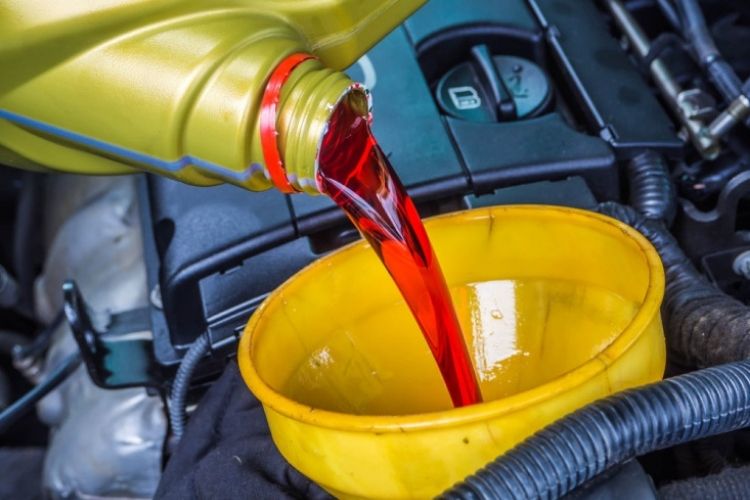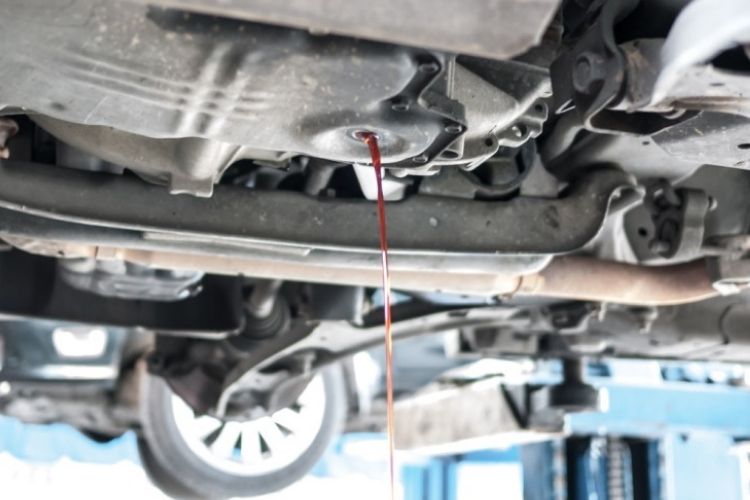Transmission Fluid Change vs Flush: When & Why
Transmission fluid is an essential component for any vehicle, helping to lubricate and cool the moving parts in the transmission system. Without it, these parts would start to suffer from overheating very quickly, eventually causing a complete transmission failure and a hefty repair bill in the process.

For this reason, it is important to ensure that the condition and clarity of your transmission fluid is monitored regularly. By periodically carrying out a transmission fluid change or transmission flush, you can prevent the buildup of grime and other contaminants and keep your transmission in perfect working order.
In this article, we’ll take a look at the difference between transmission fluid change and transmission flush, how often you need to carry out these maintenance tasks and the typical costs of each.
Transmission Fluid Change
The color of your transmission fluid can tell you a lot about its condition and whether it requires changing. New transmission fluid is a vibrant red color. Over time, due to the heating of the system and the foreign particles that can make their way through the system as a result, the fluid can start to change color. If the color of your transmission fluid is a murky, dark red or almost brown color, it’s time for a change. Check your owner’s manual to find out how to check the transmission fluid on your particular vehicle.
A fluid change, as the name suggests, is a method that changes a large amount of transmission fluid in one go. During this procedure, fluid is drained from the system and a new transmission filter is fitted. A transmission change will remove a large percentage of the buildup within your system, but will not completely replace old fluid for new fluid.

Your transmission will certainly run better as a result, but you should note that some buildup will still linger in your vehicle’s system. For this reason, you will need to keep on top of monitoring the color and condition of your fluid. You may also want to consider adding transmission fluid additives. These additives can help to prevent and fix leaks by swelling and softening worn seals and improving heat resistance and frictional properties.
Many mechanics recommend a transmission fluid change every 30,000 miles. The average cost for a transmission fluid change is $100 for manual and automatic transmissions.
Transmission Fluid Flush
Where a transmission fluid change will only replace some of the existing fluid for new, clean fluid, a transmission fluid flush completely removes all old fluid and replaces it with new. Mechanics recommend a complete flush approximately every 60,000 miles. However, this may vary depending on the vehicle you drive, how you drive and where you drive.
During the procedure, all existing fluid is pumped out of the transmission system. Once drained, completely, brand new fluid is added, resulting in your transmission running much more efficiently and smoothly.
The average cost of a transmission fluid flush is $150 for the full service. This price includes labor costs and the cost of new fluid.
The Verdict
Keeping your transmission in perfect working order will ensure your system continues to offer optimum performance and help you to avoid costly repairs.
A transmission fluid change will help to restore your system to good working order and is the cheaper option. It is also a relatively simple task that can be undertaken by vehicle owners.
A transmission fluid flush is more costly, but will replace all of the fluid and any contaminants that have built up in the system.







What about the torque converter. Does the fluid get changed in it too, with a flush?
At least one automobile manufacturer does not recommend transmission fluid flushes for their vehicles. Instead they only recommend fluid drain and replace. It’s always a good idea to do the research and proceed with care before flushing any automatic transmission.